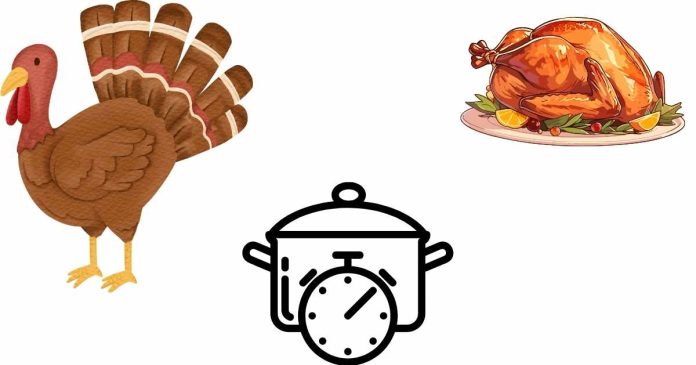Cooking a turkey to perfection requires the right balance of time, temperature, and method. The ideal cooking time and temperature can depend on several factors, such as whether you’re roasting it in the oven, the size of the bird, and whether it’s stuffed or unstuffed. Here’s a breakdown of the best practices for cooking a turkey:
1. Oven Temperature
The best temperature for roasting a turkey is 325°F (165°C). This temperature allows the bird to cook through evenly without drying out, while still giving the skin a chance to become crispy and golden.
- Higher temperatures (375°F to 400°F) can brown the skin too quickly without cooking the inside properly.
- Lower temperatures (300°F) can lead to a dry turkey as it will take longer to cook.
2. Cooking Time
The cooking time depends on the weight of the turkey and whether it’s stuffed or unstuffed. The general rule is to roast the turkey for 15 minutes per pound if it’s unstuffed and slightly longer if it’s stuffed.
Unstuffed Turkey (at 325°F):
- 8–12 pounds: 2.75 to 3 hours
- 12–14 pounds: 3 to 3.75 hours
- 14–18 pounds: 3.75 to 4.25 hours
- 18–20 pounds: 4.25 to 4.5 hours
- 20–24 pounds: 4.5 to 5 hours
Stuffed Turkey (at 325°F):
- 8–12 pounds: 3 to 3.5 hours
- 12–14 pounds: 3.5 to 4 hours
- 14–18 pounds: 4 to 4.25 hours
- 18–20 pounds: 4.25 to 4.75 hours
- 20–24 pounds: 4.75 to 5.25 hours
Tip: If your turkey is stuffed, it may take slightly longer to cook due to the heat being trapped inside the bird. You also need to ensure that the stuffing reaches a safe temperature of 165°F.
3. Internal Temperature
The best way to ensure your turkey is cooked perfectly is by checking its internal temperature. The turkey is done when the internal temperature reaches:
- 165°F (74°C) in the thickest part of the breast.
- 165°F (74°C) in the innermost part of the thigh.
- 165°F (74°C) in the stuffing (if the turkey is stuffed).
You can use a meat thermometer to check these temperatures. Insert the thermometer into the thickest part of the thigh (avoiding the bone) and the breast to get an accurate reading. If you’re stuffing the turkey, check the temperature of the stuffing itself as well.
4. Resting Time
After the turkey reaches the desired internal temperature, let it rest for 20–30 minutes before carving. This allows the juices to redistribute throughout the meat, making the turkey juicier and more flavorful.
5. Optional: Basting
While some people prefer to baste their turkey to keep it moist, basting is not essential. The turkey will release its own juices, and frequent opening of the oven door can actually lower the oven temperature, prolonging cooking time.
However, if you prefer to baste, do so once every 30 minutes. Just be sure to use a baster or spoon to collect the juices at the bottom of the pan and pour them over the bird.
6. Cooking Tips
- Don’t overcook the turkey: It’s easy to overcook a turkey, leading to dry meat. That’s why a meat thermometer is your best friend.
- Use a roasting rack: This allows hot air to circulate around the turkey, cooking it evenly. If you don’t have a rack, you can also use vegetables like carrots, celery, or onions as a base for the turkey.
- Cover with foil: If the skin is browning too quickly before the turkey is done, loosely cover the turkey with aluminum foil to prevent it from burning.
- Stuffing: If you choose to stuff the turkey, be aware that stuffing can cause the bird to take longer to cook. It’s safer to cook stuffing separately to ensure it reaches the proper temperature.
Ideal Cooking Time and Temperature
- Oven temperature: 325°F (165°C)
- Cooking time: 15 minutes per pound (unstuffed), slightly longer for stuffed turkeys.
- Internal temperature: 165°F (74°C) in the thickest part of the breast, innermost thigh, and stuffing (if applicable).
- Resting time: 20–30 minutes.
By following these guidelines, you’ll achieve a juicy, perfectly cooked turkey every time!


